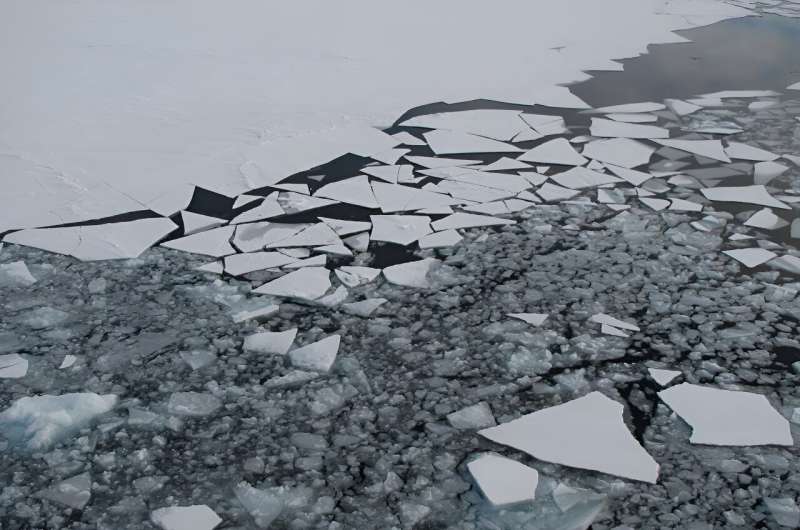This article has been reviewed according to Science X's editorial process and policies. Editors have highlighted the following attributes while ensuring the content's credibility:
fact-checked
trusted source
proofread
Study explores impacts of Arctic warming on daily weather patterns in the US

Arctic sea ice is shrinking as the world continues to warm, and a new study led by researchers at Penn State may provide a better understanding of how the loss of this ice may impact daily weather in the middle latitudes, including the United States.
The researchers used climate models and a machine learning approach to tease out the impacts of ice sea loss on the future of large-scale meteorological patterns over North America. They reported in the Journal of Climate that ice sea loss de-amplified these patterns and their impacts on temperature near the surface—meaning, for example, cold weather events may be less cold.
"The Arctic in general is the source of cold air for us when we have these really cold events," said Melissa Gervais, assistant professor in the Department of Meteorology and Atmospheric Science at Penn State and lead author of the study.
"As warming continues, we know that the Arctic is going to be less cold. What this work shows us is that the loss of sea ice also changes weather patterns that bring cold air to the middle latitudes. So, warming both depletes your source of cold air and makes it harder to transport."
Sea ice acts like a blanket over the ocean, keeping warmer water from losing heat to the atmosphere, Gervais said. Once the ice is gone, heat from the ocean can enter the atmosphere and create a low-pressure system over where the ice had been, resulting in less transport of cold Arctic air to other parts of Earth, the scientists said.
As sea ice melts, the Arctic is warming at a faster rate than the rest of the planet, a process called Arctic amplification. And while it would be expected that less cold air would be transported from the Arctic to the middle latitudes under these conditions, the new study allowed the researchers to probe more deeply into the mechanisms responsible for these changes.
"Our research allowed us to dig a little bit deeper into what is going on," Gervais said. "We were able to see that in addition to the impact of Arctic amplification, there also is an impact on the actual circulation or flow in the atmosphere."
To test the impact on weather patterns, the scientists ran a climate model under two scenarios—one with ice levels consistent with the 1980s and 1990s, and the other with reduced ice levels expected by the end of the century.
They used self-organizing maps, a machine learning method, to classify patterns of daily weather in the troposphere, the lowest layer of Earth's atmosphere where most weather occurs. They then explored how those general weather patterns translate into variables that are closer to the surface.
"Without using this machine learning method, we would not have been able to really robustly understand the processes involved," Gervais said. "For studies like this, where we're using a large volume of climate model simulations, we can't find these patterns by hand."
One weather pattern particularly impacted by the loss of sea ice involved cold weather anomalies over North America. The pattern is associated with strong cold anomalies, which reached roughly 29°F under current sea ice conditions but warmed significantly under the scenarios with less sea ice, the scientists said.
"We found that when we lose sea ice, not only is that anomaly reduced, but it also actually becomes a warm pattern," Gervais said. "So, the same pattern in the upper atmosphere is now actually bringing warmer temperatures near the surface."
More information: Melissa Gervais et al, Impacts of Projected Arctic Sea Ice Loss on Daily Weather Patterns over North America, Journal of Climate (2023). DOI: 10.1175/JCLI-D-23-0389.1
Provided by Pennsylvania State University





















